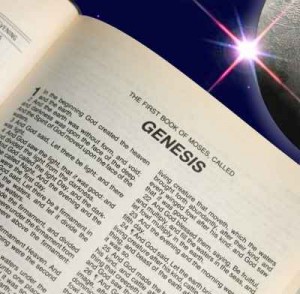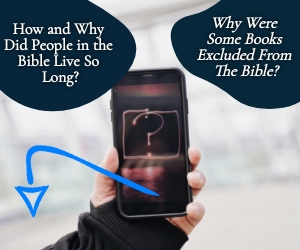Is the earth really only 6,000 years, or is it much older, and how can we know for sure?
Conventional Thinking
Most scientists believe that the earth is old…very, very old. Most believe that the earth is about 4.54 billion years old, give or take 50 million or so, but that is all sheer conjecture for the most part, because first of all, there were no eye witnesses. Secondly, the rate of radioactive decay has not remained stable over the earth’s history, so attempts to date the earth by using rocks is highly unreliable. At first, scientists based the earth’s age on the changing sea levels and the salinity of the ocean, but as time has passed, these methods were also proven to be unreliable. The rise and fall of the ocean levels is not constant. It has always been changing. Also, plate tectonics prevent us from dating or testing the earth’s first or oldest rocks because the earth’s surface has been constantly recycled as it’s melted down and new crust is formed. For this reason, we will never find the earth’s original rocks. They’ve already been melted and recycled if indeed the earth is billions of years old.
Carbon Dating
Carbon dating is often used to date rocks, but the problem with that is that there can be contamination from nearby rocks, or the rocks could have undergone cataclysmic events, or the rocks could have been infiltrated with large amounts of carbon (from dead animals), so carbon dating is only as accurate as knowing the history of the rock, and that’s impossible to know for certain. Actually, carbon dating is not designed for non-organic material (like rocks) but is used to determine the age of organic material. Dating techniques for carbon dating is based upon the fact that carbon-14, a radioactive isotope, is an element unlike other forms of carbon, most of which are far more stable. Carbon-14 is supposed to decay at a steady and consistent rate. As in all of nature, organisms manage to capture a certain amount of carbon-14 from the atmosphere, and by measuring the ratio of the radio isotope to non-radioactive carbon, the amount of carbon-14 decay can be worked out and the age of the organism established. This allows scientists to determine the age of the specimen, but again, this dating system is far from perfect. In the earth’s history, carbon levels have not remained stable, just as sea levels have not remained the stable, and both the sea level and carbon levels have fluctuated widely in earth’s history. And what they don’t tell you is that carbon-years and calendar-years are not the same, as you might expect. Carbon years are less than actual calendar years, so when you hear something that’s carbon-dated by years, it’s not the same as we know it from our calendar years. One example is a piece of wood that was tested and found to have a 0.296 disintegration rate, but another sample from the same piece of wood had a decay rate of 0.109, meaning the second sample should have been thousands and thousands of years older than the first, but both samples were actually from the same tree!

“The earth was without form and void, and darkness was over the face of the deep. And the Spirit of God was hovering over the face of the water” (Gen 1:2)..
In the Beginning
In the very first verse in the Bible, it says, “In the beginning, God created the heavens and the earth” (Gen 1:1), but something interesting follows in verse 2 where it says, “The earth was without form and void, and darkness was over the face of the deep. And the Spirit of God was hovering over the face of the water” (Gen 1:2). The Hebrew word “tohuw” from which we get, “form” means “vanity, confusion,” or “empty place,” so the question is, would God create something to be in a state of confusion? Next, the word “void” is the Hebrew word “bohuw” and means “emptiness,” and there was only darkness on the face of the waters. Some scholars have speculated that, originally, Satan, or Lucifer at the time, was given reign over the earth…before mankind was created, but then Satan wanted more and he tried to take over the throne of God, seeking to become God, and was banned from heaven. Satan’s rule may have ruined the planet, and why God may have been recreating it, as the earth was without form and void, or in a state of chaos. In the end, we really don’t know, but we also don’t know the real age of the earth. We cannot use dating methods related to genealogies because many of these are incomplete, and there may have been a considerably longer time period between the creation of the universe and the creation of man. The late Dr. J. Vernon McGee said that there were no human eye witnesses to see the creation, so we can only speculate as to the true age of the earth. And really, the age of the earth doesn’t matter. It doesn’t prove or disprove the Bible. Whether we discover it’s only 6,000 years old or not, the point is God created it. How long ago, we cannot say with any accuracy or authority.
Conclusion
We really don’t know how old the earth is, and just because it may be older than 6,000 years ago doesn’t mean the Bible isn’t true. Many hold to a gap theory where long periods of time could have occurred between Genesis 1:1 and 1:2. Also, the way the earth was created, we can only go back so far in time to test the original surface. I believe we can rest assured that it was God that created the heavens and the earth, and as far as we’re concerned, it was “In the beginning,” but when the beginning was, we cannot say precisely. God created it and that’s enough for me. I trust the Word. Besides, the Bible is not a text book about the heavens but a book about how to get there.
Here is some related reading for you: What Can We Learn About the Earth from the Bible?
Resource – Scripture quotations are from The Holy Bible, English Standard Version® (ESV®), Crossway Bibles. (2007). ESV: Study Bible : English standard version. Wheaton, Ill: Crossway Bibles. Used by permission. All rights reserved.









 Welcome to What Christians Want To Know! The mission of this site is to equip, encourage, and energize Christians. Look for regular updates including Bible Verses, Bible Stories, Christian Quotes, Christian Answers, and much more. Find out
Welcome to What Christians Want To Know! The mission of this site is to equip, encourage, and energize Christians. Look for regular updates including Bible Verses, Bible Stories, Christian Quotes, Christian Answers, and much more. Find out 









